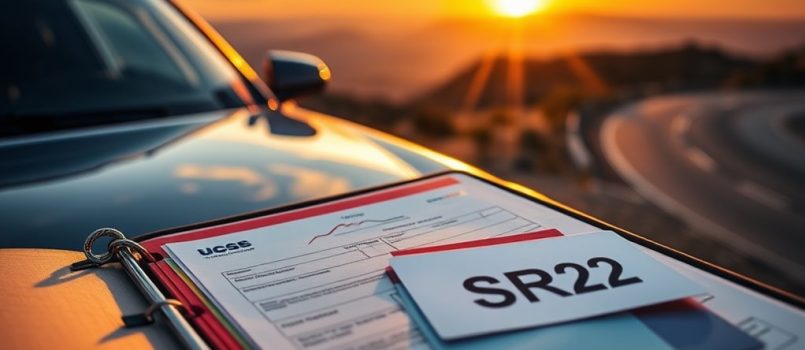
Imagine you've just moved from California to Texas after receiving an SR-22 requirement due to a past violation. You might think your California insurance will suffice, but maneuvering SR-22 insurance for out-of-state drivers involves more than just transferring policies. Each state has its own rules and filing requirements, and it's vital to understand them to maintain compliance. What steps do you need to take to guarantee you stay covered and avoid penalties?
When you find yourself needing SR-22 insurance, it's important to understand its role in proving your financial responsibility as a driver. An SR-22 isn't an insurance policy itself; instead, it's a form your insurer files with the state, certifying that you carry the minimum required auto liability insurance. This documentation is especially significant for drivers deemed high-risk due to serious traffic offenses, such as DUI/DWI convictions or multiple traffic violations. SR-22 insurance is often required for a specified period after such offenses, ensuring that drivers remain accountable.
If you're in this situation, managing the SR-22 process, especially as an out-of-state driver, can feel overwhelming, but it's necessary for reinstating your driving privileges.
If you've recently moved to a new state while still needing an SR-22, you must understand that compliance with the requirements in your new jurisdiction is essential. Each state has its own unique laws regarding SR-22 filings, including how long you need to maintain coverage and the minimum liability insurance you must carry.
However, you can't just ignore your previous state's obligations. If you move but your SR-22 requirement is still active, you'll likely need to file an SR-22 in your new state as well. This might seem redundant, but it's important to make sure you meet the legal obligations of both states.
The process of filing an SR-22 in a new state involves your insurance company submitting the form on your behalf. It's important to choose an insurer familiar with the requirements of both your original and new states. They can help you manage the complexities and make sure that your SR-22 complies with the laws in your new location.
Choosing an insurer well-versed in both states' SR-22 requirements is crucial for seamless compliance and coverage.
If you drive a vehicle registered in your new state, the insurance policy must reflect that, and you may need to adjust your coverage accordingly. Maintaining continuous coverage is significant; if there's a lapse, your insurer is required to notify the state, which can lead to severe penalties, including license suspension. You'll typically need to keep the SR-22 on file for a minimum of three years, but this duration can vary based on the severity of your offenses and state regulations governing SR-22 requirements.
As a result, you must stay proactive about your insurance status to avoid any interruptions.
If you don't own a vehicle but still need to drive, you can obtain a non-owner SR-22 policy. This type of coverage allows you to comply with financial responsibility laws while driving borrowed or rented vehicles. It's especially beneficial for those who frequently find themselves in situations where they need to drive but don't have a personal vehicle.
Conclusion
In summary, steering through SR-22 insurance as an out-of-state driver can feel like decoding an ancient script, but you can simplify the process with diligence. By ensuring you understand the requirements of both states and maintaining continuous coverage, you'll safeguard your driving privileges. Remember, compliance isn't just a recommendation; it's essential for avoiding severe penalties. Stay informed and proactive, and you'll successfully maneuver through the complexities of SR-22 insurance with confidence.